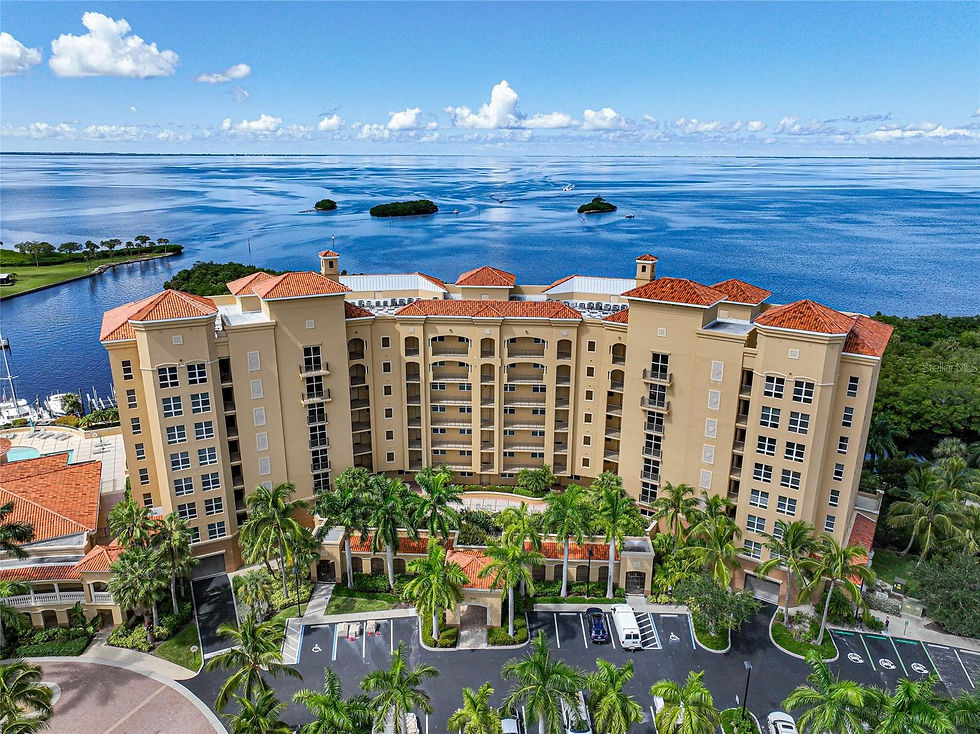
Case Studies
Case Study: Grand Isle Towers 1 & 2 – Punta Gorda, FL
Project Date: October 26, 2022
Location: Grand Isle Towers 1 & 2, Punta Gorda, Florida
Client: Lloyds of London - Grand Isle Towers I & II
Project Overview
Disaster Response Unit was engaged to address a significant water and moisture issue within Grand Isle Towers 1 & 2. The primary challenge involved moisture trapped inside CMU block walls, which were encapsulated with a vapor barrier. Despite standard restoration efforts, excessive moisture persisted, prompting further investigation.
Challenges & Investigation
- Water and moisture remained trapped inside CMU block walls despite initial drying efforts.
- The existing vapor barrier was suspected to be insufficient, allowing moisture intrusion.
- High humidity levels and external environmental factors contributed to moisture retention.
- Verification of moisture sources required specialized engineering assessments.
Expert Consultation & Case Study
To validate our findings and ensure proper drying standards were met, we collaborated with industry experts:
- Ken Larsen from the Restoration Industry Association (RIA) conducted an independent case study. His findings demonstrated that the vapor barrier previously installed was not sufficient to prevent moisture migration through the CMU walls.
- TEAM Engineering performed 3D thermal imaging scans, confirming our theory that moisture was infiltrating from the exterior environment through the vapor barrier.
Findings & Results
- Thermal imaging and moisture mapping confirmed that the vapor barrier was ineffective in preventing moisture intrusion.
- Our drying process successfully reduced moisture levels in both the CMU walls and cement flooring, meeting industry drying standards.
- Final moisture readings indicated that excess moisture was being drawn from the external atmosphere through the compromised vapor barrier, rather than originating from within the structure.
Conclusion
The Grand Isle Towers restoration project highlighted the importance of verifying vapor barrier effectiveness in high-moisture environments. Through the use of expert analysis and advanced imaging technology, Oracle Restoration Group successfully documented and addressed the issue, ensuring proper drying and preventing future moisture-related complications.
Key Takeaways
• Moisture trapped inside CMU block walls can persist despite initial drying efforts.
• Vapor barriers must be evaluated for effectiveness in high-humidity environments.
• 3D thermal imaging and expert consultation can provide critical insights for complex drying challenges.
• Proper documentation and verification are essential for large loss insurance claims and restoration standards compliance.
Oracle Restoration Group remains committed to utilizing advanced restoration techniques and expert partnerships to ensure industry-leading results for large loss projects.
Case Study: Carlstar Tire Plant – Clinton, TN
Project Date: January 16, 2021
Location: Carlstar Tire Plant, Clinton, Tennessee
Client: Lloyds of London
Project Overview
Our disaster response unit was dispatched to Clinton, TN, where Carlstar Tire Manufacturers experienced a fire incident. A process machine ignited, causing flames to spread to a dust collector, leading to widespread smoke and fire damage within the facility.
Challenges & Unique Approach
- The tire plant needed to remain operational during the remediation process.
- Traditional man lifts were impractical due to production constraints and space limitations.
- Smoke and carbon black contamination were continuously being produced by plant operations.
- Ensuring compliance with IICRC standards for air quality and contamination control.
Innovative Solutions & Execution
1. Scaffolding Instead of Man Lifts
- To maintain plant operations, we scaffolded the entire roof instead of using man lifts. This allowed for efficient remediation without disrupting production.
2. Hourly Atmospheric Testing & Containment Strategy
- Routine air quality monitoring revealed that carbon black contamination levels were exceeding our cleaning capacity in a 12-hour shift.
- To address this, we designed and implemented a Negative Air Enclosure, a containment system that isolated affected areas and maintained negative air pressure to prevent further contamination.
3. Compliance with IICRC Air Change Standards
- The IICRC standard for pollutant containment requires four air changes per hour in a negative air enclosure.
- Our system achieved eight air changes per hour, doubling the recommended standard and ensuring maximum air purification.
4. Deployment of High-Capacity Air Scrubbers & Filtration Management
- We utilized as many 2,000 CFM air scrubbers as possible, changing filters hourly due to rapid contamination.
- This high-frequency filter replacement ensured that particulate matter was continuously removed from the air.
5. Vacuum Truck Integration & Pressure Washing
- We connected vacuum truck intakes directly to the exhaust fans, pulling contaminants out of the facility.
- Pressure washing was conducted systematically, with ceilings being cleaned to an air sample clean standard, ensuring complete decontamination.
Results & Impact
- The plant remained fully operational throughout the remediation process.
- Our Negative Air Enclosure system successfully minimized airborne contamination, allowing for safer and more effective cleaning.
- The doubling of IICRC air change requirements ensured optimal air quality control.
- The combination of air scrubbing, vacuum extraction, and pressure washing ensured that all affected areas were restored to pre-loss conditions.
- Air quality testing confirmed that the facility met post-remediation safety standards before project completion.
Conclusion
The Carlstar Tire Plant project demonstrated the importance of innovation in large-scale industrial restoration. By implementing a strategic containment system, high-efficiency air scrubbing, and a vacuum extraction process, we successfully restored the facility while allowing uninterrupted operations. Our customized approach ensured a safe and compliant work environment for both our team and Carlstar’s ongoing production.
Key Takeaways
• Custom containment solutions, like the Negative Air Enclosure, are crucial for controlling airborne contamination.
• Scaffolding, rather than traditional man lifts, can allow restoration to proceed without halting facility operations.
• IICRC standards require four air changes per hour in negative air enclosures; our system achieved eight air changes per hour.
• Continuous air quality monitoring and filter management are essential in high-contamination environments.
• Vacuum truck integration with exhaust systems can significantly improve air purification in industrial settings.
• Strategic planning and adaptability are key to restoring large-scale manufacturing plants without disrupting operations.
Oracle Restoration Group remains committed to utilizing innovative restoration techniques to minimize business disruptions while delivering high-quality results.
